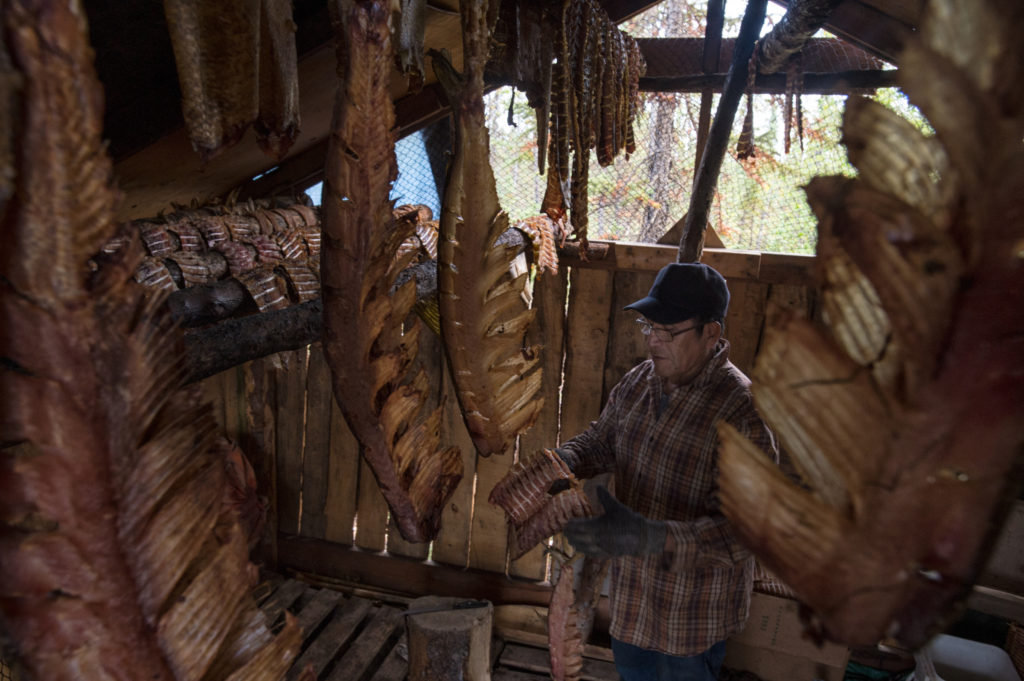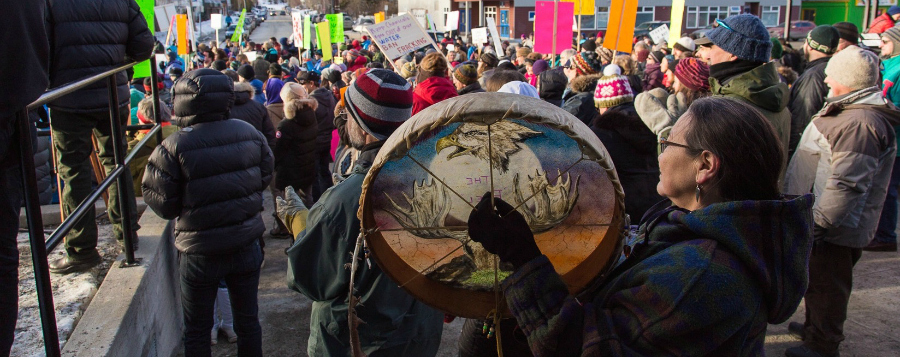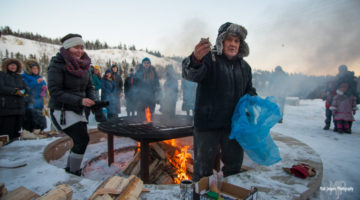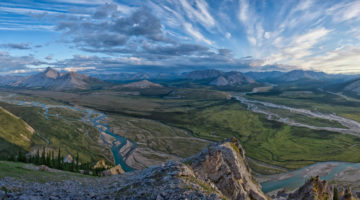PROTECT THE PLAN
In 2022, the Yukon Socio-Economic Assessment Board (YESAB) recommended that a silver exploration project not go ahead in the Peel Watershed. Yukon government is taking YESAB to court for this recommendation, asking the court to reject it and have YESAB re-review it.
The Yukon government says that it needed to seek clarity around YESAB’s recommendation on the first project application in the Peel, and says that going to court was the only option. This is simply not true. YESAB’s recommendation against the Michelle Creek project reflected the high standard set by the Peel Plan before projects can be approved.
The Yukon government’s actions are deeply disappointing and not in line with upholding the Peel Plan or the spirit and intent of the Final Agreements. Going to court over this recommendation is beyond disrespectful to everyone who participated in good faith in the Peel Plan, and leaves the future of land planning in the Yukon on shaky ground.
The First Nation of Na-cho Nyäk Dun, Tr’ondëk Hwëch’in, and the Government of Canada are going to court as intervenors, arguing that YESAB’s recommendation was fair and correct.
WHY DID YESAB RECOMMEND THE PROJECT NOT PROCEED?
In late 2022 YESAB recommended against the Michelle Creek project, a silver exploration project from Silver47 Exploration Corp. The Michelle Creek project sits in the Peel Watershed, about 20 km from Tombstone Territorial Park, in the traditional territories of the First Nation of Na-cho Nyäk Dun and Tr’ondëk Hwëch’in. It’s the first project to be put forward in the Peel Watershed since the regional plan was approved in 2019, and it’s important to get the review right.
YESAB recommends against projects when they will have significant negative impacts that can’t be mitigated. After a thorough review, YESAB recommended against the Michelle Creek project because:
- The project would disturb and displace sheep and caribou because it overlapped with important habitat.
- The project’s impacts would in turn negatively affect cultural knowledge transfer and reduce First Nation wellness.
WHY DOES THIS MATTER?
On August 22, 2019, in Mayo, alongside all the other parties to the Peel Plan, Yukon government signed the plan in a very powerful signing ceremony. Taking part in the ceremony was a promise to act in a way that accomplishes the purposes of the Final Agreements and the Peel Plan.
Instead of going to court, Yukon government could have chosen a different path—that of consultation and continued respectful collaboration with affected First Nations. Instead, it has chosen to challenge not only YESAB’s authority but the validity of the land use planning process, which Yukoners have fought for years to be upheld.
The Michelle Creek court case matters to everyone
- It undermines and disrespects the Peel Watershed Regional Land Use Plan, and the many years people fought for the plan, and breaks trust that the government will honour the outcome of future land planning processes in the territory
- It undermines and disrespects the independence of YESAB, which was created by the constitutionally protected Final Agreements between Canada, Yukon and 11 Yukon First Nations
- It’s a missed chance for Yukon government to work in partnership instead of opposition with its Peel Plan partners.
Help spread the word
Tell others what you know, and share your thoughts with governments! Send your concerns to the Yukon government. Send gratitude to Tr’ondëk Hwëch’in and First Nation of Na-Cho Nyäk Dun; they are governments and parties to the Peel Plan but are not being treated as equal partners.
Suggested email addresses:
- Yukon government: john.streicker@yukon.ca ranj.pillai@yukon.ca
- Tr’ondëk Hwëch’in: council.support@trondek.ca executive.assistant@trondek.ca
- First Nation of Na-Cho Nyäk Dun: vgresponse@nndfn.com execassist@nndfn.com
Park Proposal in the Peel Watershed
The Gwich’in Tribal Council, the First Nation of Nacho Nyak Dun, Parks Canada and the Government of Yukon are exploring the possibility of creating a new national park in a portion of this watershed.
Possible outcomes
A potential national park in the Teetł’it Gwinjik (Peel River) Watershed would:
- permanently protect the ecosystem
- advance Indigenous-led conservation
- ensure cultural practices can continue on this landscape
- support the creation of land-based economies
- strengthen biodiversity
- contribute to the recovery of species at risk
- protect and showcase this important region for current and future generations
- align with the vision and goals of the Peel Watershed Regional Land Use Plan
From its dramatic peaks and high plateaus to its sprawling river valleys and wetlands, the Peel is one of Canada’s natural wonders. The six crystal-clear rivers that flow into the Peel River – the Ogilvie, Blackstone, Hart, Wind, Bonnet Plume and Snake Rivers – are the lifeblood of this ecosystem. Four First Nations call the Peel home – the First Nation of Na-Cho Nyak Dun, Tr’ondëk Hwëch’in, Vuntut Gwitchin First Nation and Tetlit Gwich’in – and have for millennia hunted, fished and trapped in the Peel and received cultural nourishment from it.
With only limited human disturbance, the 68,000 square kilometres of vast wilderness burst with animal and plant life, from healthy populations of Canada’s iconic wildlife such as bears, wolves, lynx and caribou, to millions of boreal and migratory birds who thrive in the wetlands, to endemic plant species found nowhere else. Owing to its environmental significance, the Peel forms the northern anchor of the Yellowstone to Yukon wildlife corridor.
For years, the Peel has been coveted by industry and government for the mineral wealth that is believed to exist there – iron ore, lead-zinc, copper, nickel, and uranium – as well as coal, oil and gas. Plans to build roads, bridges and railroads into the Peel have threatened to carve up this in tact landscape. This has mobilized First Nations governments, environmental organizations, the Yukon public, hunters, tourism operators and many more groups to give the Peel the protection it deserves.






